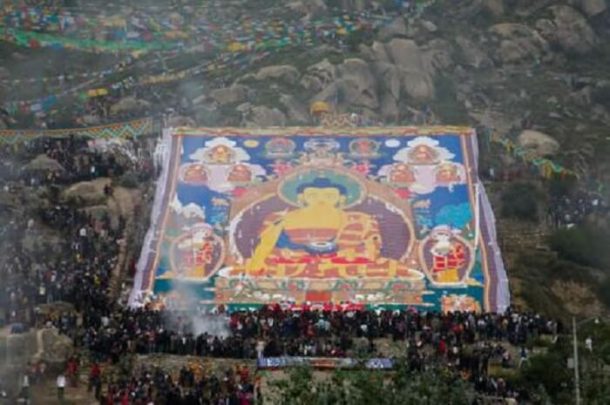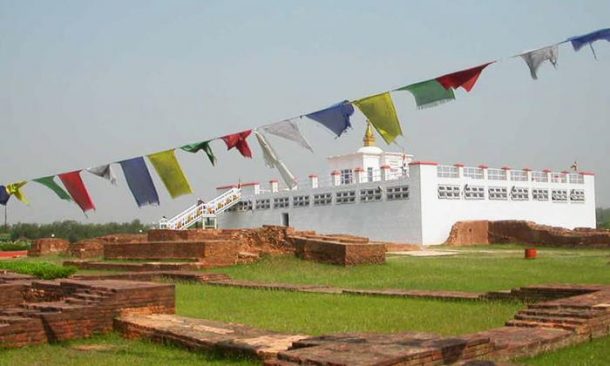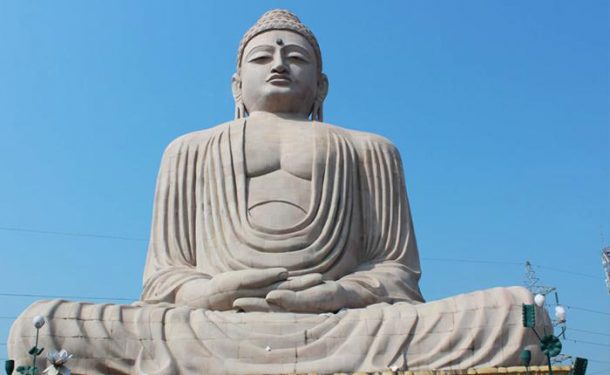Buddha and the Beginnings of Buddhism
The world’s fourth largest religion, Buddhism is one of the most widely revered religions, with more than 520 million followers around the globe. From its humble beginnings in India, thanks to the teachings of one mortal man, Buddhism spread across the globe. Starting in around the 6th to 4th centuries BCE, Buddhism expanded from its main area in northeast India into central India, and Pakistan, and then further northwest into Afghanistan and up to the Bactrian realms of Central Asia, and southwards into southern India and Sri Lanka during the 3rd and 2nd centuries BCE.

By the 4th and 5th centuries CE, it had spread across much of Southeast Asia, into Nepal, Mongolia, China, Burma, and the future Indochinese nations. By the 7th century, it had spread into Tibet, finally crossing the Himalayas to the plateau, and through Korea into Japan, as well as spreading to southern Asia into Malaysia and Indonesia. By the 10th century CE, almost the whole of the Asian continent had been introduced to this outstanding belief, which had already split into three main schools by that time. Tibetan Buddhism is
Table of Contents
Who was Buddha?
Buddha is not actually a name, it is a title that means “one who is awake”, which refers to being awake to the true nature of reality. This “awakening” is referred to in Buddhism as “Enlightenment”, and a Buddha is one who is freed from the fog and attained enlightenment within their own lifetime. It is commonly believed that, when a Buddha dies, his spirit is not reborn into the mortal suffering of life, but passes on into the peace that is Nirvana. Nirvana, which is not actually a “heaven” as such, is said to be a transformed state of existence on a different plane.
The Story of Gautama Buddha
The founder of Buddhism, who was not a god, is the person most commonly referred to as “Buddha”, and who was originally named Siddhārtha Gautama. Gautama lived in Nepal and northern India in around the 6th century BCE, and is said to have been born in Lumbini, in modern-day Nepal in around 567 BCE. The son of a king, he led a sheltered life, but at the age of 29, his life changed after a trip outside the palace which showed him the brutality and suffering of the rest of mankind.
It is said that he renounced his regal status and began a quest to seek out answers to his spiritual dilemmas. However, after six years of seeking out religious teachers and following the austere and punishing lifestyles they taught was the only way to attain wisdom, he found only frustration. For years he continued to travel and learn, and eventually came to the realization that only through mental discipline could he find the path to inner peace. It was in India, at Bodh Gaya, that he sat under a ficus tree, now known as the Bodhi Tree, until his mind was awakened and he finally attained enlightenment. It was only from that point that he would be known as ”Buddha”.

The remainder of his life was spent traveling and teaching people how to attain enlightenment, and after his first sermon in modern-day Sarnath, he traveled around the countryside teaching from village to village. It was during this period of his life that he founded the first order of Buddhist monks and nuns, many of whom became some of the greatest teachers of Buddhism across Asia. In around 483 BCE, at the age of around 84, Gautama died in the village of Kushinagar, in what is now the Northern Indian State of Uttar Pradesh.
This story of the life of Siddhārtha Gautama may not be historically accurate, as little was recorded in texts about the true life of Buddha. Modern historians agree that there was a historical figure known as Buddha, and that he lived in around the 6th to 4th centuries BCE. It is also believed that many of the records of his sermons and the Buddhist monastic scriptures were his own words or records of what he said in general. However, that is where historian theories end, as there is no way to know the exact accurate details for certain. Suffice to say, Buddha existed and formed the religion known as Buddhism, which survives throughout Asia and around the world to this day.
Was he the only Buddha?
The main religion in Southeast Asia is that of Theravada Buddhism, and it is believed that there is only one Buddha for each age of man. The current age, which has lasted since before the birth of Gautama Buddha, means that he is the historical Buddha for this age. In Theravada Buddhism, it is also believed that anyone else that attains enlightenment is known as an arhat, or “Worth One”. The main difference between the two is that a Buddha is the worldly teacher who opens up the door to enlightenment for all mankind.
Mahayana and Vajrayana Buddhism both believe that there can be more than one Buddha in an age, and have no limits on how many can become a Buddha. However, the higher aim of those seeking enlightenment in Mahayana and Vajrayana Buddhism is to attain the status of “bodhisattva”, the one who vows to remain in the mortal realm until all beings have found enlightenment.

Early Buddhist scriptures do tell of other Buddhas that came along before the current age, in times long before recorded history. They also tell of the Maitreya Buddha, the Future Buddha that will come along once all the teachings of Buddha have long been forgotten to remind mankind of the path to enlightenment.
Do the Buddhists worship Buddha?
Gautama Buddha, often known as Sakyamuni Buddha or just Buddha, was not a god, and was actually said to be critical of worship. In one of the Buddhist scriptures, it tells of how he once encountered a young man practicing the Vedic worship. Buddha spoke to the young man and told him of how it was more important to live an ethical and responsible life than to worship anything. And while it may appear that Buddhists are praying, most are not. In fact, in most schools of Buddhism, the bowing and prostrating is not worship, but a physical expression of dropping the egotistical and selfish life and committing to the practice of the teachings of Buddha.
What is enlightenment?
While many non-Buddhists believe that to be enlightened is to be in a state of perpetual bliss, this is really not the case. And enlightenment rarely ever happens quickly. It is defined as truly perceiving the true nature of all things, of all reality, and most importantly, of oneself. Enlightenment is not something only a few chosen ones can attain. Anyone can attain enlightenment, simply by realizing what already exists, and understanding the nature of self and reality. The problem is, most are lost in that fog, and just fail to see it. And while it is called a religion, Buddhism is not about learning from the words of a god. It is not something that you believe, but something that you do.
Recent Posts
Can Tourists Visit Tibet?
Exploring the Beauty of Tibetan Handicraft
The Ultimate Guide to Tibet Tours, Travel, and Trekking Adventures
All Categories
- About Tibet
- book a Tibet tour
- Buddhism Practice
- Budget Tour
- China-Tibet Train
- Customized Tibet tour
- Historical Sites
- Hot Springs in Tibet
- News
- Photography in Tibet
- Tibet attraction
- Tibet Group Visa
- Tibet Motorcycle Tour
- Tibet Small Group Tours
- Tibet Tours and Tibetan Tour Guide
- Tibet Train
- Tibet Travel FAQs
- Tibet Travel Information
- Tibet Travel News
- Tibet Travel Permit Update
- Tibet Travel Prices Rises
- Tibet Trek
- Tibet Trekking Tour
- Tibet weather and climate
- Tibet Wildlife animals
- Tibet Winter Tour
- Tibetan Buddhism
- Tibetan Cultural Features
- Tibetan Culture and Poeple
- Tibetan Festivals
- What to see in Tibet


